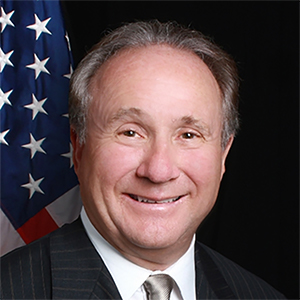The Groups and Barista Proletariat of the Democratic Party
Postmortems of the Democratic Party's loss, running well beyond the defeat of Vice President Kamala Harris and Gov. Tim Walz (D-Minn.), are starting to come in from some of the party's most perceptive thinkers.
And it was a loss across the board, not just this year. As RealClearPolitics' Sean Trende has argued, 2024's voting patterns were a "rehash" of 2022. Republican gains that year were less than expected, with then-President Donald Trump's imposition of weak Senate candidates leaving that body 50-50 Democratic and the antics of Trump-favorite former Florida Rep. Matt Gaetz sparking turmoil in a narrowly Republican House.
However, the 2022 numbers, plus stronger candidates, produced better results for Republicans this year. Trump's 50% to 48% popular vote margin over Harris was accompanied by an increase in his percentage from 2020 in every one of the 50 states and from the vast majority of the United States' 3,141 counties. The most visible exceptions on The New York Times' ingenious arrow maps were metro Atlanta counties filling up with middle-income Black migrants from troubled Northern cities.
Republican capture of a Senate majority was decisive even as the party's 3% lead in the House popular vote left it with only a bare majority of seats, thanks to Democrats' gerrymandering. However, Republican gains among Hispanics and Asians and in big metro areas point to possible future gains.
The 2022-24 rejection of Biden-Harris policies may or may not lead to an enduring Republican majority. However, it is, as the headline on an Ezra Klein postelection Times interview proclaims, "the end of the Obama coalition."
The most major components of his supposedly ascendant Democratic majority, including record turnout and percentages among Black voters, continuing supermajorities from Hispanics and Asians, and enthusiastic support from young people, have receded, and support from white college graduates has even cracked a bit. The 44th president, in his Kalorama mansion, 2.5 miles from the White House, has seen the arc of history bend toward Trump Tower and Mar-a-Lago.
Smart Democrats are focusing on one cause of their party's limited but, at least for the moment, decisive decline. Ruy Teixeira, coauthor of "The Emerging Democratic Majority," which foresaw the Democratic Party's triumph in 2008 but not its subsequent demise, writes that Democrats have moved sharply left on cultural matters, on racial quotas and preferences, on increasing rather than reducing immigration, toward stands that have repelled "the white working class" in the 2010s and now repel the nonwhite working class in the 2020s.
Nor have they delivered economic results acceptable to modest-income workers. As Clinton administration aide William Galston writes in The Wall Street Journal, Bidenomics, huge spending tranches that sparked inflation, was sparked by Hewlett Foundation-supported theorists bent on repudiating "neoliberalism" and imposing "industrial policy, worker power, antitrust policy." It turned out that voters preferred the results of Trump's pre-COVID-19 policies.
Once upon a time, Democrats relied on policy advice from state and city party bosses who were in touch with ordinary people. These days, argues economist Noah Smith, they are overly reliant on "a variety of activists and special interests -- collectively known as 'The Groups,'" who, in the contemporary equivalent of smoke-filled rooms, "persuade Democratic staffers and politicians of their ideas ... well out of the public eye."
Klein fleshes out this point, decrying "the power of this nonprofit complex in the Democratic Party." The Groups, Washington- and New York-based, don't really represent the people they presume to speak for. Hispanic Groups wanted to "decriminalize border crossing." Hispanic voters don't. Black Groups wanted to "defund the police." Black voters don't.
These aren't mass-membership groups such as those that led the civil rights revolution. "There's been this dynamic where you have these groups that are claiming to speak for very, very wide swaths of the electorate and persuading Democrats of things that those parts of the electorate don't really believe," Klein says. All of which suggests Democratic politicians would do well to block these folks on their computers and start listening to real people out there.
However, the fact that the groups don't represent all the voters they claim does not mean there is no electoral constituency for their policies at all. There is a Left constituency that represents some sizable minority of Democratic voters, which you can spot on the electoral maps.
It's most visible in university towns. In Wisconsin, Madison's Dane County (with the state's flagship university plus the state capital) casts a higher Democratic percentage and larger popular vote margin than Milwaukee County. In Michigan, Ann Arbor's Washtenaw County and East Lansing's Ingham County cast higher Democratic percentages than Detroit's Wayne County and a combined popular vote margin 15 times larger than Flint's Genesee County.
University counties are loaded with academics and public employees, plus affluent professionals and indigent grad school dropouts, many attracted by college town ambiance and the large majority disposed toward unpopular leftist policies.
You can see large concentrations of such people -- I call them the barista proletariat -- extending over relatively low-rent, mostly but not all white neighborhoods, usually subway-accessible and marijuana dispensary-dotted quarters in our largest cities. They're apparent on the Times' graphics department's superb maps of municipal elections of New York City in 2021 and the Chicago primary and runoff in 2023.
Once upon a time, traditional working-class folks, white ethnics, and Blacks and Hispanics with families and more regular jobs, lived there. Today, the barista proletariat dominates Astoria, Long Island City and Jackson Heights in Queens, and non-Orthodox Williamsburg, Fort Greene and Bushwick in Brooklyn. In Chicago, they live on the Lakefront, a couple of miles inland north of Irving Park Avenue, where expensive high-rise condos thin out in favor of cheap rentals in three-story brick buildings.
In elections for mayor, barista proletariat neighborhoods voted heavily for leftist Maya Wiley in New York in 2021 and Brandon Johnson for radical teacher union head in Chicago in 2023. Wiley, who lost most Black precincts to current New York City Mayor Eric Adams, a former police officer, finished third citywide, but Johnson edged out incumbent Lori Lightfoot in the primary and edged out former school head Paul Vallas 52% to 48% in the runoff a month later. Key votes in both contests were cast by barista proletariat wards.
By almost every standard, Johnson has been a disaster. He has allowed a contract with a firm that tracks gunfire in murder-prone areas to expire, proposed borrowing $300 million to pay off his former teacher union colleagues, and had the Chicago City Council vote down his demand for higher taxes 50-0 (former Mayor Richard Daley used to see his positions win by that margin).
The result is high crime, departure of corporate headquarters, Black as well as white flight from the city and state, and vandalism of once-vibrant shopping districts. Chicago is one of the great artifacts of Western civilization, and the barista proletariat is on the way to destroying it.
This is what we might expect from a segment of the electorate whose orientation is essentially adolescent -- with no steady community tie through homeownership or job tenure, devoted to freedoms defined by lack of adult restraint or supervision, with an adversary posture to middle-class mores and American traditions. These are people aching with personal dissatisfaction, taught in schools and colleges that their complaints can be easily assuaged by government bureaucracies.
Teixeira, Galston, Smith and Klein seem to argue that the Groups represent no existing electoral constituency. However, the barista proletariat does populate the staffs of nonprofit groups and electoral politicians, the ranks of publishers' assistants, and newspaper and magazine junior editors and writers. Their readiness to protest and shut down Democratic and media operations is a source of power, deployed often with the gleeful abandon of adolescents granting themselves a day off.
The cultural stands that hurt Harris may come and go, but the barista proletariat, which wholeheartedly supported them, remains a continuing liability for a Democratic Party that has been freshly rebuked by the voters and whose dreams of almost automatic victories have been dashed. It's a group, Smith concedes, that accounts for a large part of why progressive cities are governed so badly, and that, in turn, is one reason so many voters resisted the appeal of a San Francisco Democrat.
The barista proletariat could be a problem for Democrats if they decided to use the presidential nominating process they reformed in the 1970s, 1980s and 1990s but have allowed voters to influence, beyond the initial two or three contests, only twice in this century, eight and 16 years ago.
On both occasions, Sen. Bernie Sanders (I-Vt.), with visible barista proletariat support, came close to winning the nomination. Sanders, who turns 87 years old in 2028, presumably won't run again. However, it's far from clear that the smart Democrats who understand the harm done to their party by the Groups will be able to outsmart them or outmaneuver their one electoral constituency, the barista proletariat, which threatened to run away with their presidential nomination the last time it was openly contested, eight years ago.
========
Michael Barone is a senior political analyst for the Washington Examiner, resident fellow at the American Enterprise Institute and longtime co-author of The Almanac of American Politics. His new book, "Mental Maps of the Founders: How Geographic Imagination Guided America's Revolutionary Leaders," is now available.
Copyright 2024 U.S. News and World Report. Distibuted by Creators Syndicate Inc.





































Comments